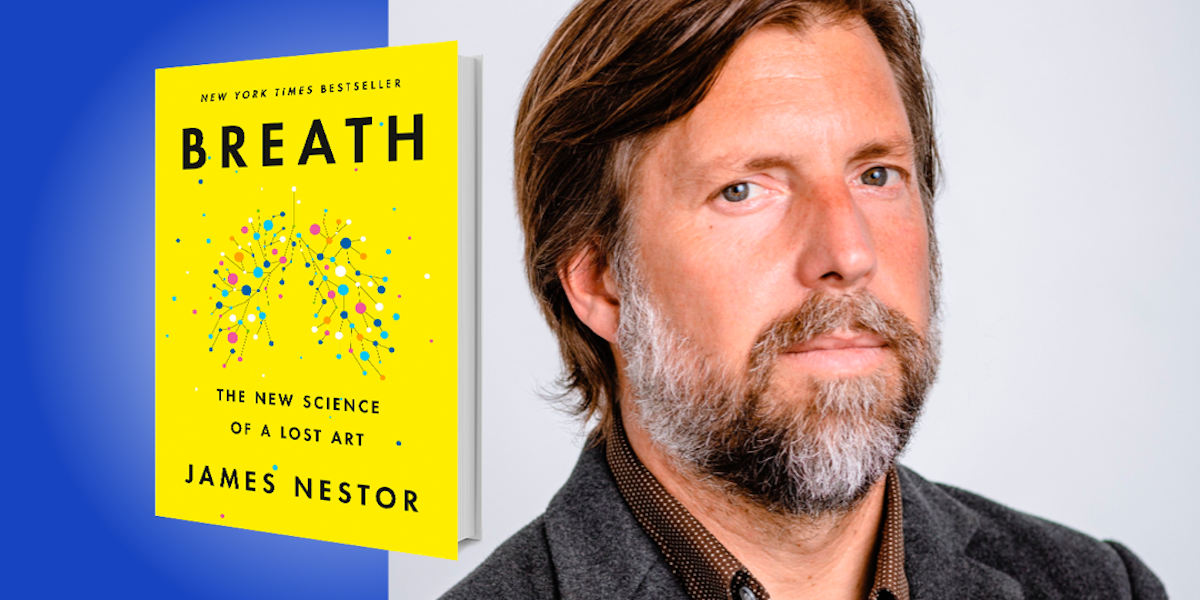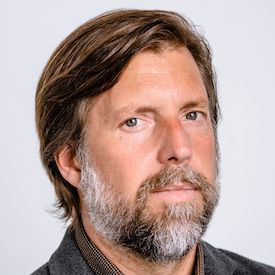James Nestor has written for Outside, Scientific American, The Atlantic, Dwell, the New York Times, and many other publications. His book Deep: Freediving, Renegade Science, and What the Ocean Tells Us About Ourselves was a finalist for the 2015 PEN/ESPN Award for Literary Sports Writing, an Amazon Best Science Book of 2014, and more.
Below, James shares 5 key insights from his new book, Breath: The New Science of a Lost Art. Download the Next Big Idea App to enjoy more audio “Book Bites,” plus Ideas of the Day, ad-free podcast episodes, and more.
1. You’re breathing all wrong, and you can blame evolution.
Unlike what many of us learned in school, human evolution does not always mean progress. Evolution means change, and life can change for better or for worse. As far as our breathing is concerned, our species has been changing in ways that are detrimental to our health. Today, we have the sad distinction of being the worst breathers in the animal kingdom. This is largely because over the past several centuries, the human mouth has been growing smaller and smaller. Our mouths today have grown so small that our teeth, fighting for space, grow in crooked. More than 90 percent of the modern population has crooked teeth.
One of the side effects to having a mouth that’s too small for its face is that there’s less room for our airways, which makes them harder to breathe through. This is why so many people have chronic respiratory problems, why half of us snore, 25 percent of us suffer from sleep apnea, 25 million have asthma, and up to 50 percent of us must slacken our jaws just to get a breath in. Our airways are clogged, and the consequences of this poor breathing are wreaking havoc on our health. From hypertension to neurological disorders, asthma to metabolic diseases, all can be either exacerbated or sometimes even caused by poor breathing habits.
2. We can reverse much of the damage that’s been done to our bodies with nothing more than the air we breathe.
How we breathe matters in ways that are more wondrous and weird than anyone could have imagined. I saw this firsthand working with several researchers in the field. They introduced me to people who had long suffered from autoimmune problems, high blood pressure, anxiety, ADHD, gut issues, and more. No therapy or drug could help cure these people. They had tried them all. But something incredible happened when these patients were trained to harness and focus on their breathing. They were able to develop their bodies’ internal organs, take control of faulty nervous systems, stimulate their immune response, and in some extraordinary cases, even change their skeletal structure. They were able to blunt or sometimes reverse the symptoms of what had long been considered incurable diseases. This would all seem medically impossible if there weren’t x-rays, videos, charts, and reams of data sheets to prove it. “How we breathe,” all these people told me, “is as important as how much we exercise or whatever we eat.” Breath is a missing pillar of health.
“Breathing really is the key to unlocking the human body’s true potential.”
3. What you thought you knew about breathing is wrong.
One of the first things I learned was to practice breathing less, because as counterintuitive as it seems, taking in more air doesn’t equal more oxygen. In fact, breathing in too much will actually reduce the body’s ability to absorb oxygen.
When we breathe slower and less, we increase circulation while gently reducing the burden on the heart. We allow our cardiopulmonary system to enter into a state of coherence where the organs function at peak efficiency. By breathing less, we allow our bodies to do more.
4. The autonomic nervous system is not autonomic.
Each of us is built with a vast network that connects all of the organs to the brain. Our brains use this system as a kind of power control center, turning organs on and off to best suit the needs of the body. While we can’t consciously control our organs, we can control the way in which we breathe—and when we control our breath, we can influence our nervous system. We can enable our bodies to do incredible things, to heal ourselves, to superheat ourselves in freezing temperatures, and even provoke immune functions. These remarkable transformations have been extensively studied and often published in leading scientific journals. Breathing really is the key to unlocking the human body’s true potential.
5. The art and science of breathing is nothing new.
A few weeks ago, a doctor at Queens Hospital in London described on social media a breathing technique, which included a slow, deep breath followed by a short breath hold. The doctor and his colleagues found that this simple practice could help purge the lungs of mucus, and allow patients with COVID-19 and other respiratory problems to breathe easier and recover faster. Within a few days, the clip had been viewed more than four million times and heralded by some as a bold new discovery—but this technique isn’t new at all. It was documented 2000 years ago in the yoga sutras of Patanjali. Ancient yogis used it to expand their lungs, increase their respiratory fitness, and balance their nervous systems. A few centuries after that, an ancient Taoist text echoed the same practice as a way to maintain health and live a longer life. The science of breathing has been around for thousands of years; it’s been developed and practiced in cultures from India to China, Japan to ancient Greece, and more. Today, new science is simply confirming what so many of these ancient texts have known all along.
For more Book Bites, download the Next Big Idea App today:
































